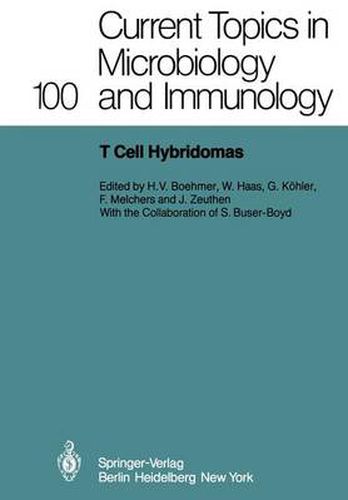Readings Newsletter
Become a Readings Member to make your shopping experience even easier.
Sign in or sign up for free!
You’re not far away from qualifying for FREE standard shipping within Australia
You’ve qualified for FREE standard shipping within Australia
The cart is loading…






This title is printed to order. This book may have been self-published. If so, we cannot guarantee the quality of the content. In the main most books will have gone through the editing process however some may not. We therefore suggest that you be aware of this before ordering this book. If in doubt check either the author or publisher’s details as we are unable to accept any returns unless they are faulty. Please contact us if you have any questions.
For more than ten years cell fusion techniques have been applied in studies on various lymphocyte functions. Ig expression was first studied in hybrids obtained by fusing myeloma cells with fibroblasts (1) or lymphomas (2), both of which do not produce Ig, and with Ig producing myelomas (3) or human blood lymphocytes (4). Kohler and Milstein (5) fused a myeloma with spleen cells from immunized mice. Up to 10% of the hybrids obtained secreted antibodies specific for the immunizing antigen. This suggested that plasma cells preferenti ally fused with the myeloma cells, a finding which was of enormous practical value. It was found that both Band T lymphocytes could be fused with the T cell tumor BW5147, which is however not permissive for Ig synthesis (6). A very large number of T cell hybridomas were generated by fusing BW5147 with cell populations containing in vivo or in vitro activated cells (7). The hybrids showed no specific T cell functions and binding assays for T cell receptors were not available. In particular, no hybrids were obtained which expreS1ed specific cytolytic activity that could be tested in short-term Cr release assays (8). However, the frustrations expressed about these failures, published in January, 1978 (9), were relieved by Taniguchi and Miller’s publication a few months later of T cell hybridomas producing antigen-specific suppressor factors (10). Unfortunately, their hybrids rapidly lost factor production.
$9.00 standard shipping within Australia
FREE standard shipping within Australia for orders over $100.00
Express & International shipping calculated at checkout
This title is printed to order. This book may have been self-published. If so, we cannot guarantee the quality of the content. In the main most books will have gone through the editing process however some may not. We therefore suggest that you be aware of this before ordering this book. If in doubt check either the author or publisher’s details as we are unable to accept any returns unless they are faulty. Please contact us if you have any questions.
For more than ten years cell fusion techniques have been applied in studies on various lymphocyte functions. Ig expression was first studied in hybrids obtained by fusing myeloma cells with fibroblasts (1) or lymphomas (2), both of which do not produce Ig, and with Ig producing myelomas (3) or human blood lymphocytes (4). Kohler and Milstein (5) fused a myeloma with spleen cells from immunized mice. Up to 10% of the hybrids obtained secreted antibodies specific for the immunizing antigen. This suggested that plasma cells preferenti ally fused with the myeloma cells, a finding which was of enormous practical value. It was found that both Band T lymphocytes could be fused with the T cell tumor BW5147, which is however not permissive for Ig synthesis (6). A very large number of T cell hybridomas were generated by fusing BW5147 with cell populations containing in vivo or in vitro activated cells (7). The hybrids showed no specific T cell functions and binding assays for T cell receptors were not available. In particular, no hybrids were obtained which expreS1ed specific cytolytic activity that could be tested in short-term Cr release assays (8). However, the frustrations expressed about these failures, published in January, 1978 (9), were relieved by Taniguchi and Miller’s publication a few months later of T cell hybridomas producing antigen-specific suppressor factors (10). Unfortunately, their hybrids rapidly lost factor production.